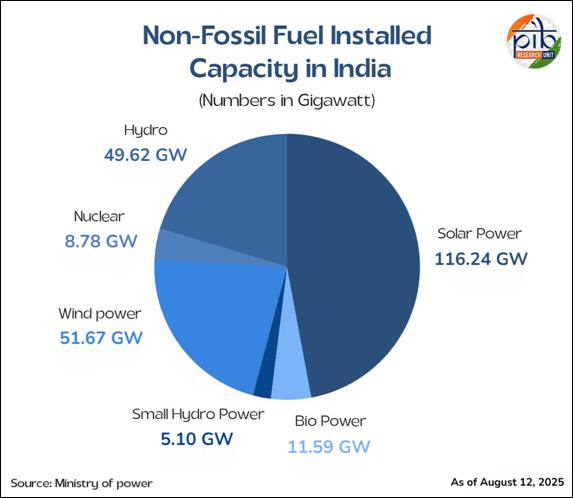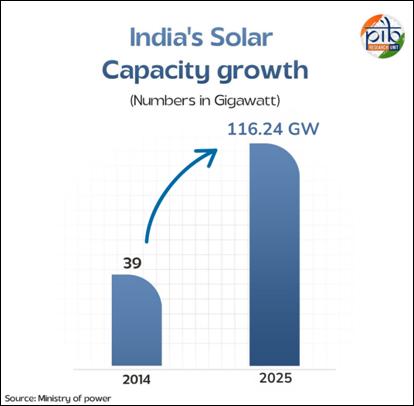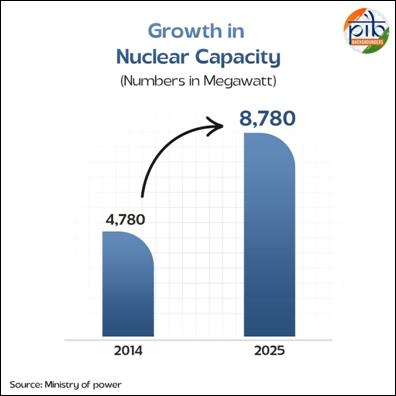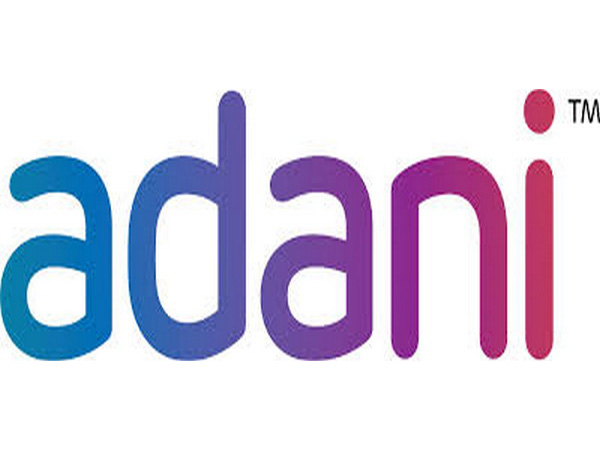New Delhi [India], August 15 (ANI); In what could be considered as a landmark moment for India’s clean energy journey, Prime Minister Narendra Modi, from the ramparts of the Red Fort, on Friday announced that the nation has achieved its 50 per cent clean energy target in 2025 — a full five years ahead of the 2030 deadline.
Marking Independence Day celebrations, the Prime Minister announced and hailed the achievement as a pivotal step towards an Atmanirbhar Bharat in the energy sector, underscoring the country’s transformation from a fossil-fuel-dependent importer to a global clean energy leader.
“When the world today expresses concern over global warming, I wish to tell the world that Bharat has resolved to achieve 50 per cent clean energy by 2030. That was our target for 2030. Look at the capability of my countrymen, look at their determination to fulfil the resolve of making Bharat developed–we achieved the 50 per cent clean energy target in 2025 itself, five years ahead of schedule. This is because we are as sensitive towards the world as we are responsible towards nature,” PM Modi said on the occasion of 79th Independence.
At COP26 held in 2021, India committed to an ambitious five-part “Panchamrit” pledge.
This included reaching 500 GW of non-fossil electricity capacity, generating half of all energy requirements from renewables, and reducing emissions by 1 billion tonnes by 2030. India also aims to reduce the emissions intensity of GDP by 45 per cent and achieve net-zero emissions by 2070.
According to the latest government data, India added a record 29.52 gigawatts (GW) of renewable capacity in 2024-25, taking total installed renewable energy (RE) capacity to 234.24 GW (excluding nuclear), up from 198.75 GW last year.
Solar energy leads the charge, with installed capacity skyrocketing from just 2.82 GW in 2014 to 116.24 GW today, now accounting for nearly half of India’s total RE capacity.
Wind power follows at 51.67 GW, while large and small hydro contribute 54.72 GW combined. Biopower has also grown to 11.59 GW over the past decade.
India now ranks 4th globally in total RE capacity, 3rd in solar power, and 4th in wind energy, boasting the world’s fastest-growing renewable program.
The clean energy surge has been powered by a suite of ambitious government reforms and programs.
The PM-Surya Ghar: Muft Bijli Yojana, with a Rs 75,021 crore outlay, aims to provide free solar electricity to one crore households.
As of August 14, 2025, over 17.24 lakh households have benefitted, with subsidies worth Rs 9,841.77 crore released. The scheme also introduced Model Solar Villages to promote decentralised clean power at the grassroots level.
In agriculture, the PM-KUSUM scheme has installed over 8.53 lakh solar pumps, replacing diesel-powered systems and cutting an estimated 6.6 million tonnes of carbon dioxide emissions.
Beyond solar, India is expanding in wind, hydro, bioenergy, green hydrogen, and nuclear power. Offshore wind projects, backed by a Rs 7,453 crore viability gap funding scheme, are set to add 1 GW capacity off Gujarat and Tamil Nadu.
The National Green Hydrogen Mission, with a Rs 19,744 crore budget, targets 5 million metric tonnes (MMT) annual production by 2030, along with 125 GW of new RE, Rs 8 lakh crore in investments, and 6 lakh jobs. Hydrogen hubs have been identified in Kandla, Paradip, and Tuticorin.
In the nuclear sector, operational capacity has grown from 4,780 MW in 2014 to 8,780 MW across 25 reactors, with a remarkable 87 per cent plant load factor in 2024-25. Ten new reactors are already functional, and capacity is set to increase tenfold by 2047.
“The result is a virtuous cycle: local manufacturing creates jobs and resilience, competitive tariffs make clean energy affordable, and inclusive programs bring every citizen into the transition. As we look ahead to 2030 and beyond, India is not just meeting global commitments — it is setting a new template for how a nation can grow, decarbonise, and remain self-reliant. In the journey from energy dependence to energy leadership, the momentum is unmistakable, and the destination is clear: an Atmanirbhar Bharat, powered by its own clean, green energy,” the government said today, in a factsheet.
With five years gained on its clean energy target, India is now firmly on track to meet, and potentially exceed, its 500 GW non-fossil capacity goal by 2030, positioning itself as a decisive force in the global fight against climate change. (ANI)
Disclaimer: This story is auto-generated from a syndicated feed of ANI; only the image & headline may have been reworked by News Services Division of World News Network Inc Ltd and Palghar News and Pune News and World News
HINDI, MARATHI, GUJARATI, TAMIL, TELUGU, BENGALI, KANNADA, ORIYA, PUNJABI, URDU, MALAYALAM
For more details and packages



















